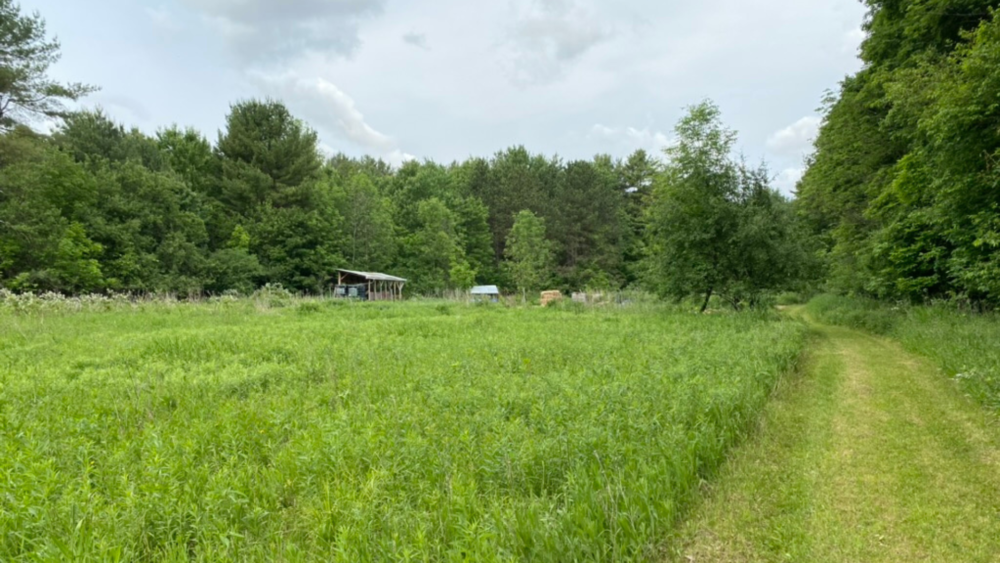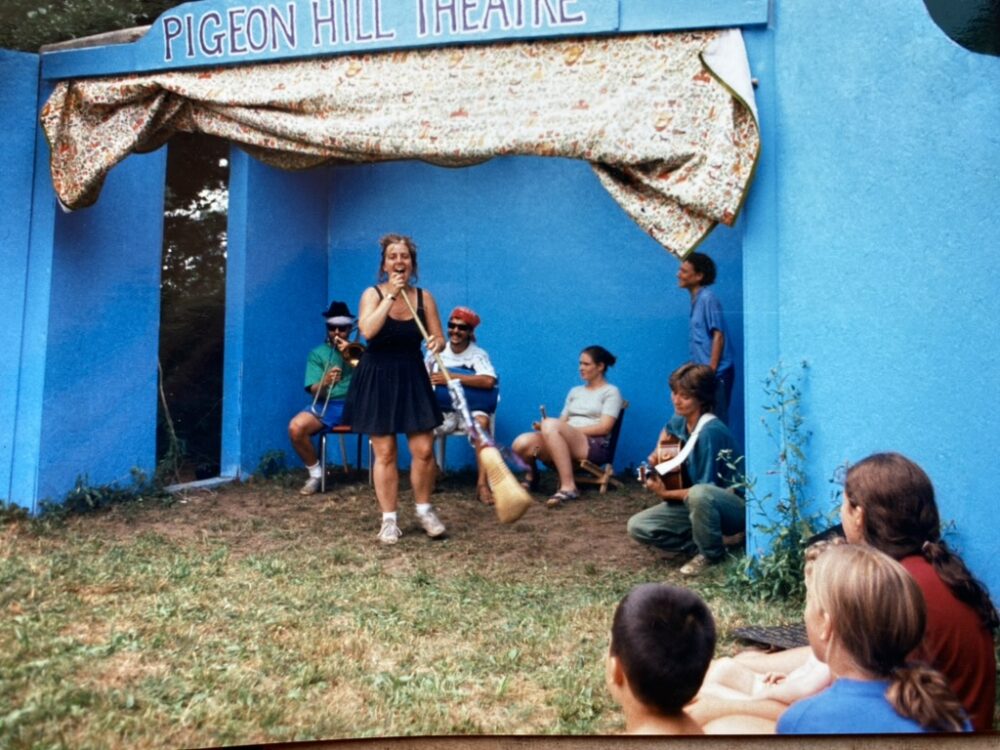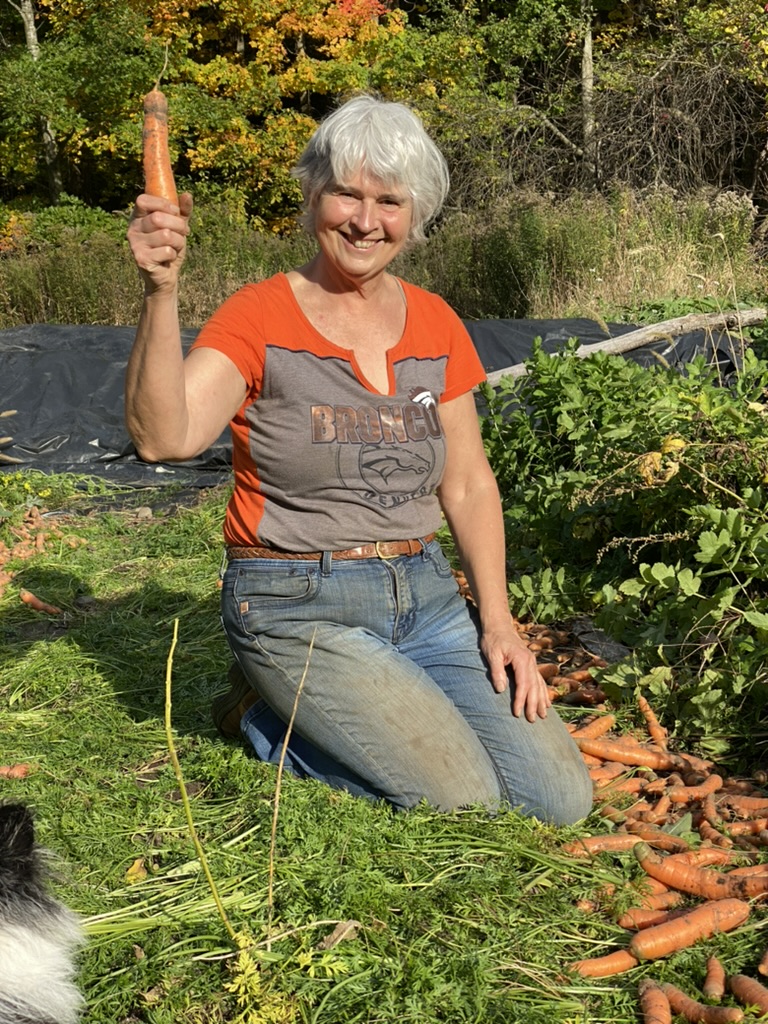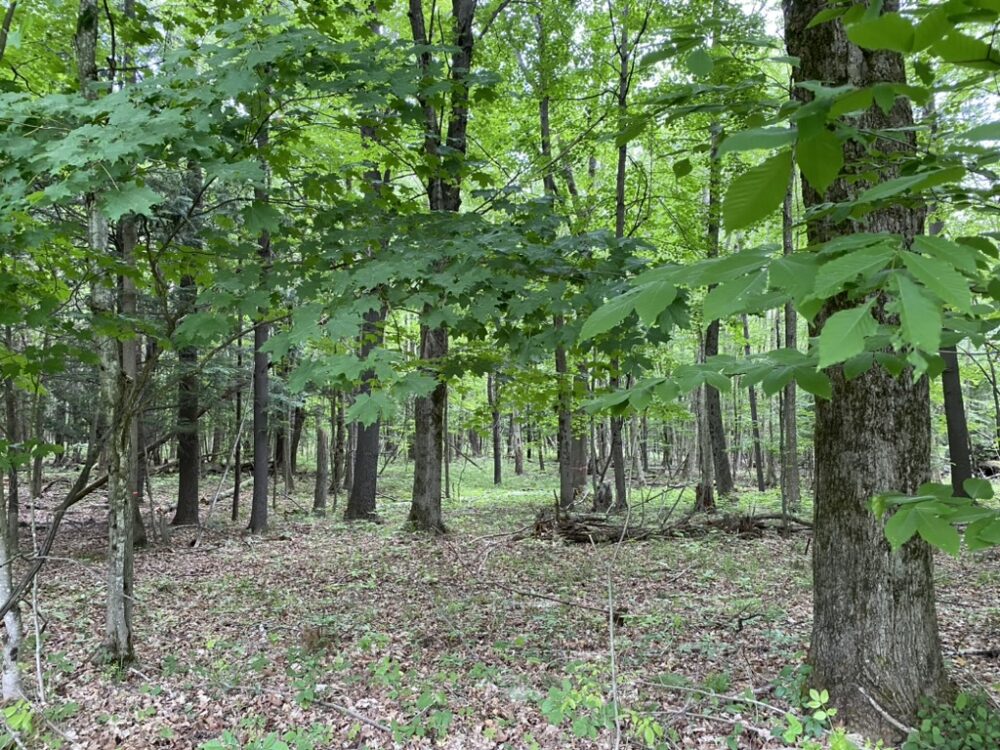This blog post was written by Ananda Fitzsimmons, President of Regeneration Canada’s Board of Directors.
Last December, 2022, we signed our 53 acre property in Saint-Armand, Quebec over to the Fiducie Foncière du Mont Pinacle (FFMP), a non profit land trust organization with the mission of land conservation in the Brome-Missisquoi region around Mont Pinacle. Traditionally conservation means keeping human interaction with the land to a minimum, not much more than walking through it on a walking path. But there is an alternative model for land conservation developing, which introduces the notion that human interaction with the land can be beneficial. This is why the FFMP is making us their first project to include regenerative agriculture.
Of course, this idea is not new. Indigenous peoples have always lived close to the land, and their traditional ways of managing resources allowed them to sustainably harvest everything they needed to live well without exhausting those resources for generation after generation. People had a beneficial role in the ecosystem. Excluding people from the land can’t be the only way to protect it. Even today, indigenous people around the world are being removed from their traditional lands, often in the name of conservation. This is not right. Perhaps modern society’s industrial methods of unsustainably pillaging the land are partly the result of our culture having lost our deep connection to nature. Most people today live in cities and have little awareness of where their goods come from or how they were produced.

The Land
Back in the early 80’s, my friends and I had a dream about getting out of the city and getting closer to nature. We were all university educated city folk starting to have children and worried about the state of the world we were bringing children into. Climate change was not even on the radar back then. We were worried about nuclear threats, environmental pollution and an overly materialistic culture. We wanted to grow our own food, heat with wood and create a lifestyle based on cooperation and reciprocity. Four families came together and we bought our little piece of paradise for $30,000 in 1987.
The land was zoned for agriculture but it had not been farmed in many years beyond one field which had been rented out for grazing dairy cows. There were no buildings on it so we all lived in houses nearby. In the summertime as soon as school was out, we would set up camp on The Land. (We always called it The Land. Once we tried to come up with a better name but nothing else would stick, so we gave up.) We had big gardens where we taught ourselves to grow fruits and vegetables, while other sections of The Land were allowed to grow wild. We built a summer kitchen with a hand pump and a gas stove.
We lived outside all summer long. We raised free range children. The kids ran around in a gang all day amusing themselves with very little besides rocks, sticks and plants. They were amazingly creative at having fun without much imposed structure from the adults. The adults took turns making meals. We grew a lot of our food in our large organic garden. At night we sat around a campfire singing songs, telling stories and playing games. It was pretty idyllic.

For one week each summer we hosted an event called Peace Camp. It was an exercise in community building. Families with kids would come to set up camp. We divided up the tasks of cooking and cleaning. Collectively we would decide how to spend our time. People would offer to lead activities, we would make a schedule. There was mask making, soccer games, meditations, talent shows and talking circles. Some of the kids who came from the city had never seen a frog before. It was an initiation for them to live outside for a week. We built a temporary community and created some deep bonds through this immersion in living together on The Land.

In teaching myself to garden I really learned where my food came from. I learned how hard it is to get carrots to germinate when you have to keep the seed evenly moist for two weeks and the weather alternates between too wet and too hot. I feel joyful experiencing the full year cycle from finishing off the last potatoes, squashes and jars of tomato sauce as the first spring greens are coming in. I understand how much time and space it takes to produce all the food my family will consume in a year. Not that I grow it all myself but I know the effort it takes and I am grateful to the people whose food I buy. I don’t take food for granted because I know what a challenge it is to produce it. With climate change it is becoming even more challenging and we need to preserve our fertile land more than ever.
I have learned to make compost, use mulch and grow cover crops to feed the soil. Over the years our garden soil has become beautiful, rich in organic matter. Most folks who live in the city may not know the difference between dirt and good soil but I have been fortunate enough to know the joy of that. My kids are grown up now but they are all foodies. They know where good food comes from.
All this I got from my one quarter share of $30,000 back in 1987. Today our little piece of land has escalated in value to $220,000. I often run into people who have the dream of moving to the country. It is just not so easy anymore for people to do what we did. Land is unaffordable for the average family. Yet what we were seeking when we bought it, to get closer to nature, to understand where our food comes from and to raise our children in a cooperative community based on human, not materialistic values is needed today more than ever.
The land trust
The gesture we made in donating this land was a win/win. We still get to stay on as users for the rest of our lives, according to the users convention we created with the Fiducie Foncière du Mont Pinacle. If any of our children have projects they want to do there, they can apply to become users as well. Other people with land based projects can apply and we can integrate as many compatible projects as there is room for. The land we love so much and agreed to steward since 1987 will continue to have its ecological assets protected. One third of the land is a protected wetland and there are some rare bird species which make their home there. We have lost nothing and we got more than our money’s worth over the years.
But even more importantly than the fact that we may provide a few people with access to land, we hope to set an example with this donation. We are proud to be part of a burgeoning movement to take land out of speculation. Land is an ecological asset to the world, not just those with lots of money. We all need to eat and we need to preserve the ecology which maintains our life support systems. From our example we hope that more people will put conservation contracts on their land.
Each conservation contract is negotiated specifically for each situation. It depends on the needs of the users and what ecological assets are being protected. In some situations the land can still be sold, but the new owners must respect the conservation contract. In our case, we donated the land to the trust and received a tax credit for its value. Donating land makes it possible for those who want to do small scale regenerative land based projects to have access at an affordable price. It means we can insist that those who come after us cannot exploit the land or destroy its ecological capital.

I envisage a future where it is more common to put land in trust with a dedicated vocation. I would like to see land and farms more accessible to people who don’t inherit them. The land trust movement is growing in many places. One example that inspires me is the Iroquois Valley Farmland REIT in the United States, which buys up farmland as an investment and provides long term leases to regenerative and organic farmers. They now own 30,000 acres in different locations across the US, which is conserved through regenerative organic farming methods and cannot be developed.
There are many different organizations using the land trust model to both protect land from the escalating real estate model and make it accessible to people to grow food, protect ecosystems and have closer relationships with nature. That is why we donated our land, to help grow this movement.
If you are interested in permanently preserving your agricultural land, you can turn to organisations like the Foodlands Cooperative of BC, Farmland Legacies (AB & SK), the Ontario Farmland Trust, Protec-Terre (QC), the New Brunswick Community Land Trust, and the L.M. Montgomery Land Trust (PEI), who can guide you through the process of entering a Farmland Easement Agreement, selling or donating to a land trust, or establishing a new land trust.




